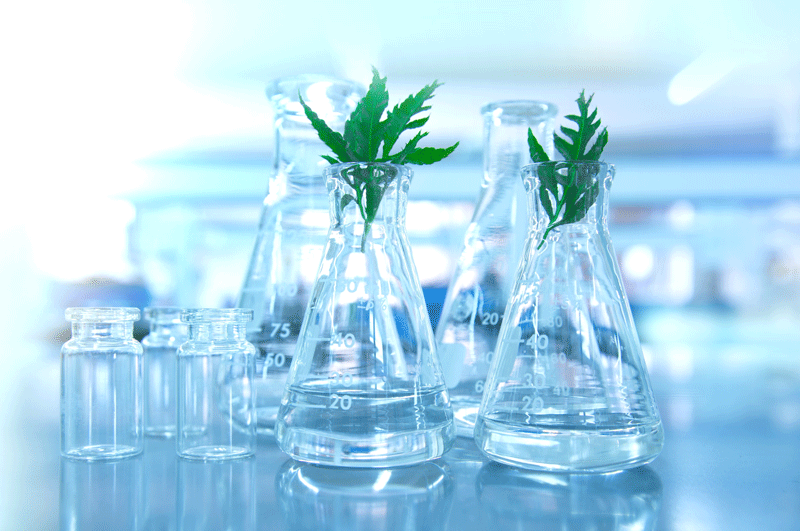The integration of bioscience and biotechnology
Biotechnology is advancing at a rapid pace and China, with international cooperation, has started to move to the front of the pack. Various projects have already been underway to try and improve the research and development (R&D) of sustainable systems. Whether it is microalgae, or new uses for waste straws, these recent acts of innovation are extremely important to developing a greener ecosystem. In this article, the Qingdao Institute of Bioenergy and Bioprocess Technology (QIBEBT), outlines the recent strides China has made in researching how to establish new, green sustainable systems.
Countries around the world are prioritising R&D in sustainable supply systems. Improving the R&D of conversion technologies, which includes bioproducts, bio-catalytic conversion, and thermal-chemical and chemical transformation is essential. The aim is to establish a sustainable system of bioproducts with high efficiency and low cost. This type of research is starting to take off in China and is important to establishing new, green sustainable systems.
Various species of microalgae
Using microalgae to convert CO2, light and H2O into oil through photosynthesis has attracted a lot of attention and is seen as a potential solution for clean energy production, high-value added bioproducts and as a high-value use of CO2.
Theoretically speaking, microalgae will produce 20-28 tons of biomass per acre each year and each ton of microalgae could sequester 1.83 tons of CO2. Moreover, microalgae oil could be an ideal feedstock for liquid biofuels (bio-diesel or jet fuel) and value-added bioproducts for health, pharmaceutical and cosmetic industries.
In 2013, engineered microalgae was introduced by Chinese R&D that mirrored a particular strain of microalgae called tribonema that are protozoa/pollution resistant and easy to harvest. This particular strain of algae also contains a high-yield of oil and proved that large scale filamentary produces these special properties. If used, this particular strain of algae could also avoid many of the diseases that tend to crop up in large-scale batches of cultivated microalgae.
Utilising this new knowledge on microalgae, researchers developed a series of genetically engineered cyanobacteria to further integrate microalgae’s use into existing biofuels and biochemicals. This cutting-edge research in China has led to a number of collaborations. An example of this is the recently established R&D system for microalgae biofuels and bioproducts by Boeing and the QIBEBT for the development of sustainable aviation biofuels. A pilot project was also launched by Solix Biosystems and Xinjiang Qinghua to further develop uses for microalgae energy.
Comprehensive use of the waste straw
At the 14th Meeting of the Central Financial Leading Group, President Xi Jinping proposed that “as we dispose of agricultural biomass waste we should use it to make methane and biogas in order to provide energy and agro-organic fertiliser”.
In 2016, the Ministry of Agriculture of the People’s Republic of China published the Programme on Promoting Pilot Projects for Making Comprehensive Use of Agricultural Waste and estimated that annual faecal residue and waste water could reach 3.8 billion tons of crops.
The underlying problem with how to treat agricultural waste is how to breed excellent microbial communities that can adapt to anaerobic fermentation and convert straw biomass into gas. Currently, a technique is being researched for commercial adoption that will utilise highly-concentrated anaerobic fermentation to create the necessary biogas. However, there is still a lack of efficient technology that can carry out fermentation, and techniques have not yet been fully developed and/or tested.
Although some of these issues have been remedied, the R&D community still lacks the technology for large scale commercialisation of repurposed methane. To try and address this problem, researchers have tried to develop different mixing strategies, stirring equipment and methane pressure washing equipment with the end goal being the fixing of the methane commercialisation bottleneck.
In Pingdu, a county level city of Qingdao, a pilot trial system that used these recently developed methods of handling methane was established, with an annual output of 180 thousand cubic meters. In Baicheng, a city in Jilin Province, another pilot project was established with an annual methane output of 430 thousand cubic meters that operated efficiently in cold areas.
The high value of wood fibre
Fibre biomass is the most abundant type of biomass that can be found in nature, so it is inevitable that it will try to be used to produce various types of fuel and other miscellaneous chemicals. However, problems still remain regarding how these high-quality bio-resources can be obtained efficiently and at low cost.
In response, scientists have tried to find a similar high-quality, non-food fibre biomass material that also has a high output, high conversion yield and can be found in sufficient supply. They also broke the barrier of natural anti-degradation and developed efficient and green fibre pre-treatment techniques. Fibre degrading molecular devices, like Cellulosome, are extremely efficient. Thus, researchers have tried to develop equipment and technologies based on these devices in the hope of commercialising and improving the entire cell catalysis system. While researching the pre-treatment of wood-fibre raw materials, QIBEBT even developed a new product that could lessen the problems related to high-energy consumption and heavy pollution when using a single physical, or chemical method.
Conclusion
All of the above biotechnologies have been applied in biofuels, environmental treatments and health product development, and a total of 12 pilot projects have been established to test these revolutionary ideas that were developed in the laboratory. Researchers must uphold the idea of integrated scientific development in order to continually drive the development of these core technologies in the biosciences.
The Qingdao Institute of Bioenergy and Bioprocess Technology (QIBEBT) was co-founded by the Chinese Academy of Sciences, the provincial government of Shandong and the municipal government of Qingdao in 2006.
To carry out the cutting-edge research achievement, the institute has attracted high qualified scientists from world renowned universities, research organisations and large industries. Currently, QIBEBT has a staff of over 600 and 350 of postgraduate students.



Recent Comments